Introduction
Good quality audio is just as important as an impeccable video stream. If you have a perfect sound setup, your Members can hear you loud and clear, and can fully enjoy the Reading you provide. Almost all webcameras come with a built-in microphone, but these microphones do not necessarily provide the best sound that would be available.
If you wish to provide the best of the best, perhaps it is time to invest in an external microphone and review how you arrange your sound setup within your room. In this guide we will help you with some basic audio settings, ideal microphone positioning (even if you use a webcam’s built in microphone) and will also give you some examples of great and reliable microphones.
*Please note that any of the devices and tools recommended on this page are not officially endorsed products. Our Support team gladly assists you with any related inquiries but might not be able to provide an in-depth assistance during setup and troubleshooting. It is your responsibility to ensure 100% compatibility between your devices, tools and your own streaming setup.
External Microphones for PC
In this section we will be focusing on external microphones for when you go online from PC. Mainly we recommend the use of easy to set up USB microphones, as these are more than perfect for providing a good sound quality while also not requiring too much configuration and additional equipment.
Blue Yeti USB
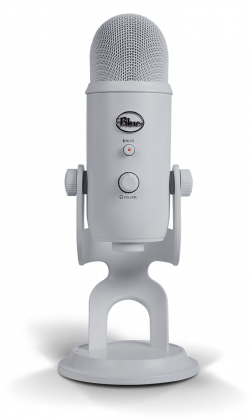
The Blue Yeti is one of the most commonly used USB microphones on the market. It has a volume knob and a mute button that flashes red when muted. With its own driver you can setup different pickup patterns for the microphone, allowing you to adjust which noises are detected by the microphone and from which directions. It comes in a basic, a Studio and a Pro version, with plenty of additional accessories available for purchase, each aimed at creating a better audio experience.
Razer Seiren X

A microphone designed for streaming, it provides superb quality audio while also filtering out background noises. Has a tighter pickup pattern, but this pattern cannot be adjusted or changed. Recommended for smaller rooms, or when you are closer to the microphone.
Audio Technica AT2020 USB edition
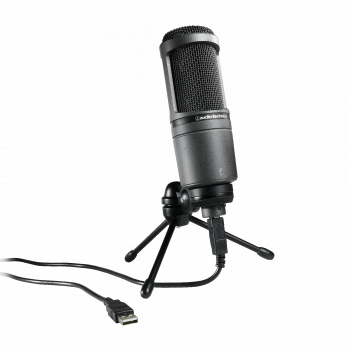
The Audio Technica AT2020 is one of the best starter microphones you can get, though it might be harder to set up and is quite strong, meaning it will pick up plenty of noise from the background as well. We only recommend this to experienced users, who possess the necessary technical knowledge to properly setup professional audio devices. We particularly advise on using the USB edition of this microphone, as they are much easier to setup.
External Microphones for Mobile
With mobile devices, the built-in microphone is usually not as strong and clean as with webcameras. If you wish to use an external microphone for your mobile device you will most likely use a Bluetooth microphone, as they are more portable and easier to handle and setup.
Please do note these are not officially endorsed products. Compatibility with smartphone OS may vary. Always ensure that your smartphone is compatible with the external microphone before your purchase it!
Anker PowerConf S3 Bluetooth Spearkerphone

A Bluetooth device that can be used both as a speaker and as a multi-directional microphone at the same time. Easy to set up and is quite portable as well. Works both with cable and Bluetooth and is compatible both with phone and PC!
Shure MV88 for iOS
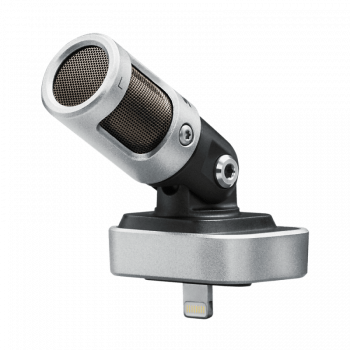
This microphone is suitable only for Apple iPhones, and offers a very clean quality audio with plug-in connection (lightning type connector). The microphone’s direction can be set freely which helps pick up only the sounds that really matter, while filtering out the background noise.
Boya BY-DM100 for Android
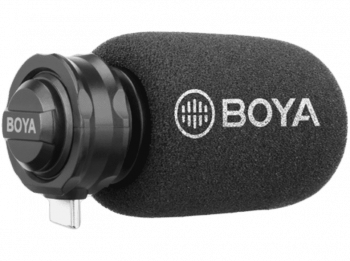
This microphone is suitable only for Android OS devices, and connects via USB Type-C. It offers a much greater sound quality compared to the built-in smartphone microphone while also removing noise coming from behind the microphone.
Additional Tools for External Microphones
These tools can help you reduce further unwanted noise for your external microphone and thus create a crisper and cleaner sound quality. They are mainly recommended for PC users but some might be even used for mobile devices as well.
It is very important that you check that the item you wish to purchase for your microphone is 100% compatible with it. Most of the time the manufacturer of the microphone will offer exclusive accessories for that specific product.
Pop filters
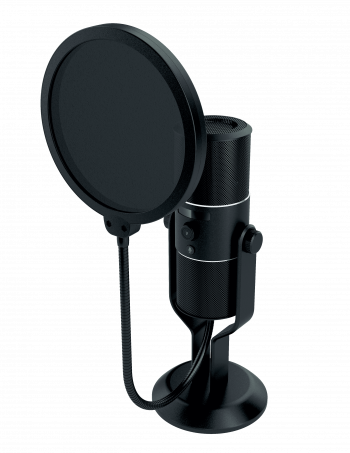
A noise protection filter used for microphones to eliminate popping sounds in recorded speech or singing. They are mainly used indoors and when the recorded person is closer to the microphone. It is most useful if you wish to place your microphone closer to yourself.
Windscreen
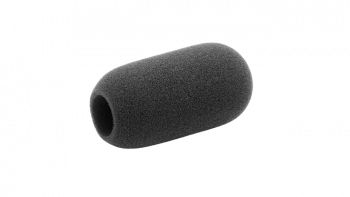
These foam “hats” are applied to the microphone to reduce the lower frequency noises usually generated by moving air, such as wind in outdoors environment. It is mostly useful if you are using a strong microphone indoors with the air conditioning unit or a fan turned on in the room. It can also help reduce low murmurs in the room, caused by your computer or other electronic appliances.
Shock mount
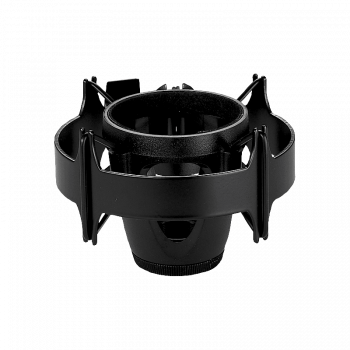
A shock or isolation mount is used to reduce shock and vibration from the environment, thus reducing noise in the microphone. Such vibrations can come from mechanical equipment in your room (computer, fan, AC unit, etc.) or when handling or moving the microphone around. Always check if the shock mount you wish to purchase is compatible with your microphone.
Microphone stands


Microphone arms and tripods can be used to stabilize your microphone and make them reach the ideal position without being in the way. For arms, multiple variation are available, with standing and hanging setups and also ones that you can clip onto the side of your desk. Tripods can be smaller and might be useful if you wish to move the microphone closer to yourself. General tripods might also be used for mobile devices to better stabilize them.
Microphone Positioning
Microphone Positioning
Aside from getting a professional equipment, there are other ways of ensuring that you get the best out of your audio quality. Below you will see some tips and tricks on how to properly position your equipment and how to reduce background and unwanted noises in your stream.
The speaker and microphone position can greatly affect your audio quality. For example, if the microphone is too close to or facing towards the speakers, it can pick up audio patterns from your computer as well, which can distort your voice or even cause echoing.
We also recommend reducing the bass output on your speakers and setting the volume on mid level, so that it is not too loud and does not distort the audio for the microphone.
External microphone position
Most external microphones come with what is called a cardioid or supercardioid polar pattern. This means that audio incoming from the front of the microphone will be recorded in greater quality, while audio from the sides and behind will be mostly filtered out.
If you are working with an external microphone, which you can move separately from your web camera, then the most ideal position is to place it forward and away from the speakers, about 1-2 meters ahead of them and about 0-1 meter from yourself. Of course this means that the microphone will be likely in front of your web camera, so you must pay attention that it does not block the view and is not too visible in the image either. Alternatively, if you place the speakers away from the desk, then you can place the microphone there as well.
Built-in web camera microphone position
In case you are using your web camera’s built in microphone, then you will likely have the camera placed atop your screen or close to it. In case the speakers are next to the screen on a desk, they should be placed more than 1 meters apart from each other and facing outwards, away from the camera, this way eliminating any interference. Alternatively, you can place the speakers elsewhere in the room, even further away.
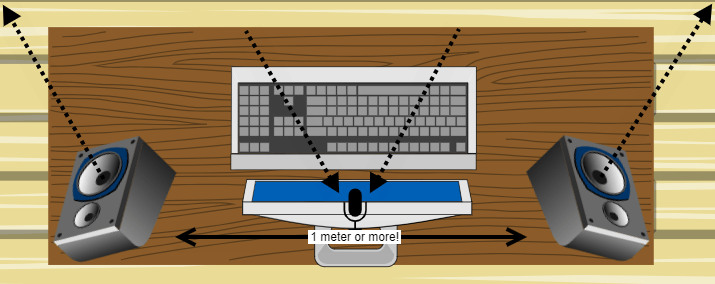
Mobile microphone position
Always pay attention that you are not covering the microphone opening on your mobile device, when holding it in your hand or even placing it on another static surface. The microphone opening is usually found either at the bottom of the device or near the back camera slots. It is recommended that you remove the external phone case while streaming, as the materials of the case could greatly reduce the microphone’s ability to pick up sounds.
If you are using an external headset device to listen and talk to your visitors, then make sure that the microphone component of the headset is not covered by your clothing or your hair.
Other Options to Reduce Environmental Sounds
Here are some additional tips and tricks you can use to reduce the environmental sounds in your room and give way to what really matters the most: your voice. We will list a few items and ideas that you might want to consider in order to further remove background noise.
Silent keyboard and mouse
There are devices manufactured just for the purpose of eliminating unwanted clatter and clicking noises. One example is Logitech’s MK295 keyboard and mouse combo that you can check here. Of course there are other options on the market, so it is worth looking around to find what is best suitable for you!
Stable desk and chair
An unstable desk, chair or bed can make creaking noises that can disturb your stream’s audio whenever you move around. Properly stabilizing these furniture and tightening their screws might help removing these sounds.
Quiet Fans and AC units
When the summer heat hits, it is unbearable to be without a good air conditioning unit or a fan, but these devices can cause a lot of noise in the background too. It is recommended to set them to a lower but constant setting and to purchase and use devices that are made especially to run quietly. Cold mist spraying fans are a good option too, as they usually operate with less noise.
Speaker setup and music volume
Besides positioning the speakers, it is also worth paying attention to what type of speaker you are using. We recommend ones that do not use any sort of artificial bass boost and have a clean natural sound. One of such options would be a studio monitor speaker system.
The music volume you hear will be always sound louder in your stream. Try to keep the music volume at a lower level, so that your visitors can listen to you without disturbances. When you go online, open your own stream on the site and listen to it to see if the volume is ideal. You may also search for and use browser extensions or applications that specifically help your microphone with filtering out certain audio channels (your music for example). This way you can easily eliminate any echoing in your microphone.
Setting Up Microphone on Your PC
When connecting via PC, most users will find themselves using simple USB microphones, with a so called plug-and-play feature, where the necessary drivers and setup is made automatically when the device is plugged into the computer for the first time. This is true for the webcamera’s built-in microphone too, as these ones usually use USB connection as well.
Some higher grade microphones come with either a phone connector (audio jack), XLR or something else. As most of these professional microphones require further hardware knowledge, we are focusing on the more commercially available and easy to setup USB devices. If you need assistance with setting up the higher grade microphones, we recommend contacting a local professional who can help you setup the hardware in your room.
Nevertheless the type of microphone you have, some basic settings are all the same for each microphone, based on the operating system you are using. Below we will show you how to ensure your microphone is working properly.
Setup for Windows OS
- Connect your microphone to your PC.
- Open Start Menu.
- Type ‘mmsys.cpl’ to the search bar on the Start Menu, press enter. The Sound settings window should open.
- Click on the Recording tab.
- A list of microphones should appear here. To ensure you see all the devices, be sure to right click in the list and click to show both disabled and disconnected devices. A device needs to be Enabled in order for it to work!
- If you are sure the device is enabled and connected, you can right click the microphone in this list and select Properties.
- In this new Properties window you can click on the Levels tab to adjust the volume and ensure that the device is not muted. You can also click on the General tab to see what drivers are installed under the Controller Information section
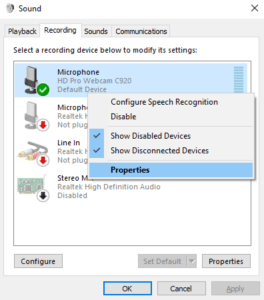
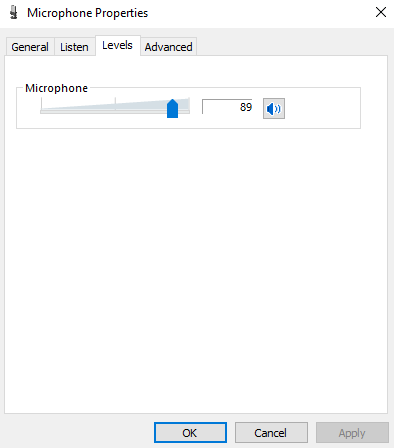
Setting Up Microphone on Mobile
If you use the Oranum Broadcaster App to go online, the audio setup is much more easier, as all you need to do is ensure the application has access to the microphone. It is also important to not to cover the phone’s built in microphone.
Here’s how you can enable microphone access on your phone:
Apple devices:
- Go to Settings > Privacy.
- Tap the Microphone hardware feature.
- The list shows the apps that requested access. You can turn access on or off for any app on the list.
Android devices:
- Go to Settings > Privacy > Permission manager.
- Tap on Microphone.
- The two lists show the apps that are allowed or denied access. You can turn access on or off for any app on the list.
Additionally, you may use external microphones for your device as well. These will likely either connect via USB, audio jack, or Bluetooth. Connecting these should be all you need to do for them to work.